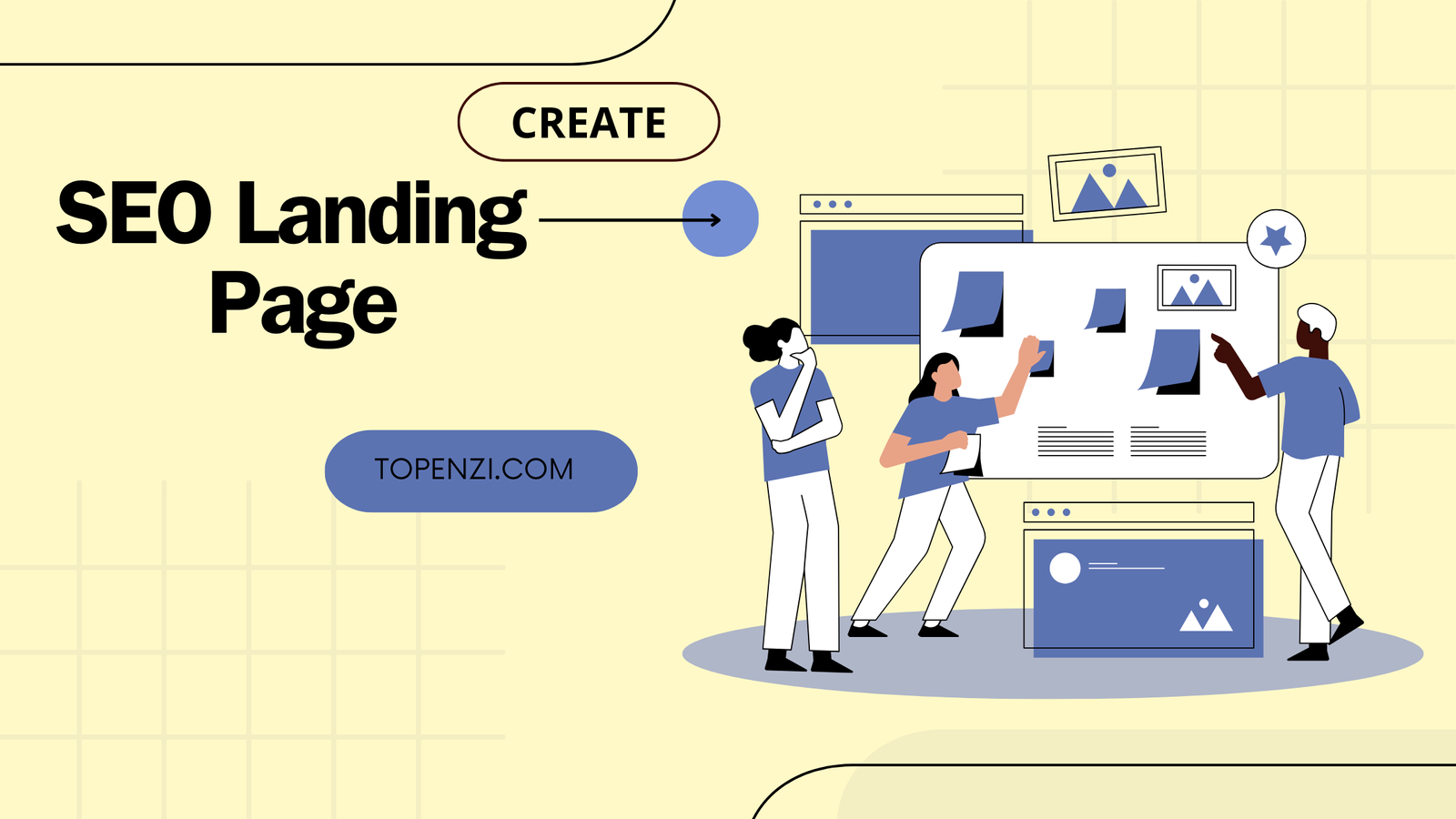A well-optimized SEO landing page can significantly enhance your website’s visibility, drive organic traffic, and convert visitors into customers. In this blog, we’ll discuss the best practices for creating winning SEO landing pages that rank well in search engines and deliver a great user experience.

1. Keyword Research
Effective keyword research is the foundation of any successful SEO strategy. Identifying the right keywords ensures your landing page targets the phrases and terms your potential customers are searching for.
Best Practices:
- Use tools like Google Keyword Planner, Ahrefs, or SEMrush to find relevant keywords with high search volume and low competition.
- Focus on long-tail keywords that are more specific and have a higher intent to convert.
- Incorporate your primary keyword naturally into your page’s content, title, meta description, headers, and URL.
2. Compelling and Relevant Content
Content is king when it comes to SEO. High-quality, relevant content not only helps with rankings but also engages visitors and encourages them to take action.
Best Practices:
- Create informative, engaging, and valuable content that addresses the needs and pain points of your audience.
- Use a mix of text, images, videos, and infographics to make your content more engaging and easier to digest.
- Ensure your content is well-structured with clear headings, subheadings, and bullet points for better readability.
3. On-Page SEO Optimization
On-page SEO involves optimizing individual elements of your landing page to improve its search engine ranking and user experience.
Best Practices:
Title Tag:
The title tag is a concise HTML element that defines the page’s title in search engine results. It should be compelling, include relevant keywords, and be under 60 characters to maximize visibility and click-through rates.
Meta Description:
The meta description is a brief summary of a web page’s content displayed below the title tag in search engine results. It should be compelling, relevant, and under 160 characters, enticing users to click through to your website. A well-crafted meta description improves click-through rates and enhances the page’s SEO performance.
Headers (H1, H2, H3):
Header tags, such as H1, H2, and H3, structure content hierarchically on web pages. H1 tags denote the main heading, while H2 and H3 tags are subheadings. They improve readability, help search engines understand content hierarchy, and should include relevant keywords for effective on-page SEO.
URL:
URLs are web addresses that specify the location of a page on the internet. Optimize URLs by including relevant keywords, keeping them concise, and using hyphens to separate words. Clean, user-friendly URLs improve click-through rates and SEO rankings.
Image Alt Text:
- Image alt tags are descriptive text attributes added to HTML image tags.
- They provide alternative text for visually impaired users and improve accessibility.
- Alt tags also help search engines understand images and improve SEO by including relevant keywords.
- Ensure alt tags are concise, descriptive, and relevant to the image content.
4. Mobile-Friendly Design
With the increasing use of mobile devices, having a mobile-friendly landing page is crucial for SEO and user experience.
Best Practices:
- Use responsive design to ensure your landing page looks and functions well on all devices.
- Optimize images and videos for faster loading times on mobile.
- Ensure buttons and links are easily clickable on smaller screens.
5. Fast Loading Speed
Page speed is a critical factor for both SEO and user experience. Slow-loading pages can lead to higher bounce rates and lower rankings.
Best Practices:
- Optimize images by compressing them without losing quality.
- Use a content delivery network (CDN) to deliver content faster to users based on their geographic location.
- Minimize the use of heavy scripts and plugins that can slow down your page.
6. Internal and External Links
Links help search engines understand the context and relevance of your content, and they can also enhance user experience by providing additional resources.
Best Practices:
- Include internal links to other relevant pages on your website to keep visitors engaged and improve site structure.
- Use external links to reputable sources to provide additional value and context for your content.
- Ensure all links are working and avoid broken links that can harm user experience and SEO.
7. Clear Call-to-Action (CTA)
A strong, clear CTA guides visitors towards taking the desired action, such as signing up for a newsletter, downloading a resource, or making a purchase.
Best Practices:
- Place your CTA above the fold to ensure it’s immediately visible to visitors.
- Use action-oriented language that clearly communicates what you want visitors to do.
- Make your CTA stand out with contrasting colors and compelling design.
8. User Experience (UX) Optimization
A positive user experience keeps visitors on your page longer, reduces bounce rates, and encourages conversions, all of which are favorable for SEO.
Best Practices:
- Ensure your landing page is easy to navigate with a clear layout and intuitive design.
- Use whitespace effectively to make your content more readable and engaging.
- Test your landing page on various devices and browsers to ensure a consistent experience.
Leave a Reply